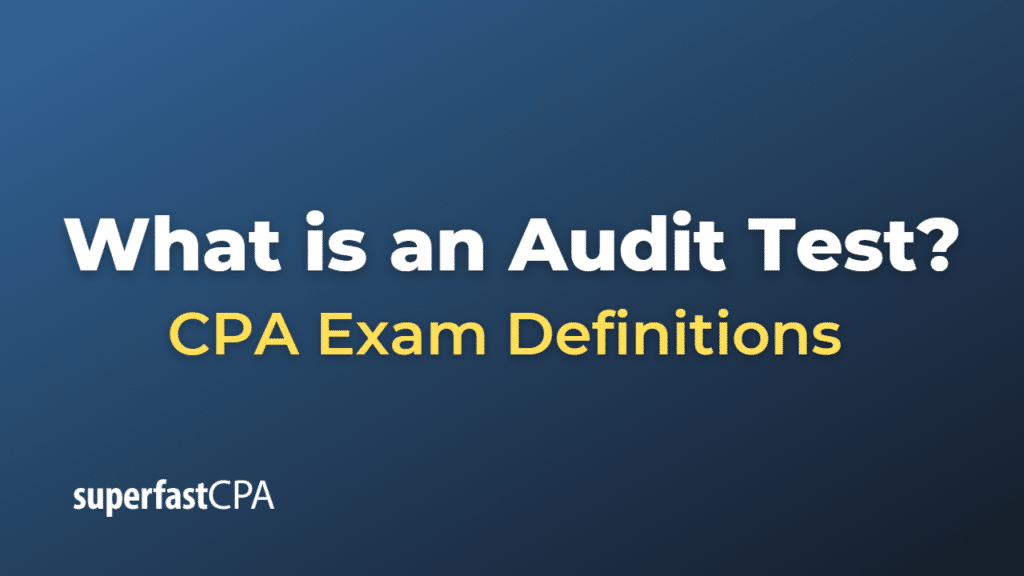Audit Test
An audit test is a procedure or set of procedures performed by auditors during a financial statement audit to gather evidence to support the validity, accuracy, and completeness of the company’s financial information. Audit tests are designed to assess the effectiveness of a company’s internal controls, identify potential errors or misstatements in the financial statements, and provide reasonable assurance that the financial statements are free from material misstatement.
There are several types of audit tests, including:
- Test of controls: These tests evaluate the effectiveness of a company’s internal controls in preventing or detecting material misstatements. Examples include reviewing documentation for proper authorization, observing physical controls over assets, and reperforming reconciliations.
- Substantive tests: These tests involve direct examination of financial statement balances or transactions to verify their accuracy and completeness. Examples include confirming account balances with external parties, performing analytical procedures to identify unusual fluctuations, and examining supporting documents for transactions.
- Compliance tests: These tests assess whether a company is adhering to relevant laws, regulations, and accounting standards. Examples include reviewing tax filings, checking for compliance with industry-specific regulations, and verifying that financial statements are prepared in accordance with Generally Accepted Accounting Principles (GAAP).
- Dual-purpose tests: These tests combine elements of both tests of controls and substantive tests, providing evidence on the effectiveness of internal controls and the accuracy of financial statement information simultaneously. An example is testing the accuracy of accounts receivable balances while also assessing the effectiveness of the company’s credit approval process.
Audit tests are tailored to each specific engagement based on the auditors’ understanding of the company’s operations, industry, and identified risks of material misstatement.
Example of Audit Test
Let’s consider an example of an audit test involving a company’s accounts receivable balance.
ABC Corporation is a manufacturer that sells its products to various wholesalers. The audit team has identified that there is a risk of material misstatement in the accounts receivable balance due to potential errors in recording sales and potential uncollectible amounts.
The audit team decides to perform the following audit tests:
- Test of controls: The auditors review the company’s internal control procedures for approving and recording sales transactions. They examine a sample of sales invoices to ensure proper authorization and approval by the appropriate personnel, as well as checking that the transactions are accurately recorded in the general ledger.
- Substantive test: The auditors perform an accounts receivable aging analysis to assess the collectibility of the outstanding balances. They identify any accounts with overdue balances and request that the company provide additional information on the collection efforts and the likelihood of recovering these amounts.
- Compliance test: The auditors verify that ABC Corporation is adhering to the appropriate accounting standards for revenue recognition and accounts receivable estimation. They review the company’s policies and procedures for recognizing revenue and estimating the allowance for doubtful accounts, ensuring that they are consistent with the applicable accounting principles.
- Dual-purpose test: The auditors select a sample of accounts receivable balances and confirm the outstanding amounts with the customers directly. This test provides evidence on the accuracy and existence of the accounts receivable balances while also assessing the effectiveness of the company’s credit approval and monitoring processes.
By performing these audit tests, the auditors can gather sufficient evidence to support their opinion on the accuracy and completeness of ABC Corporation’s accounts receivable balance, as well as its compliance with relevant accounting standards and internal controls.












